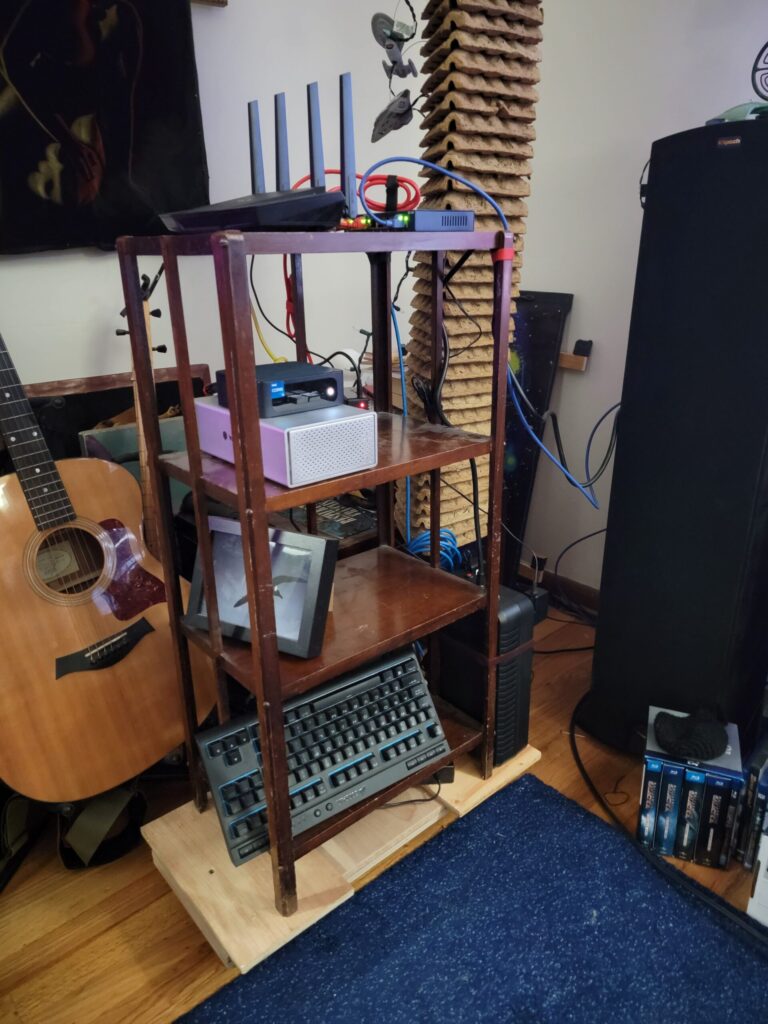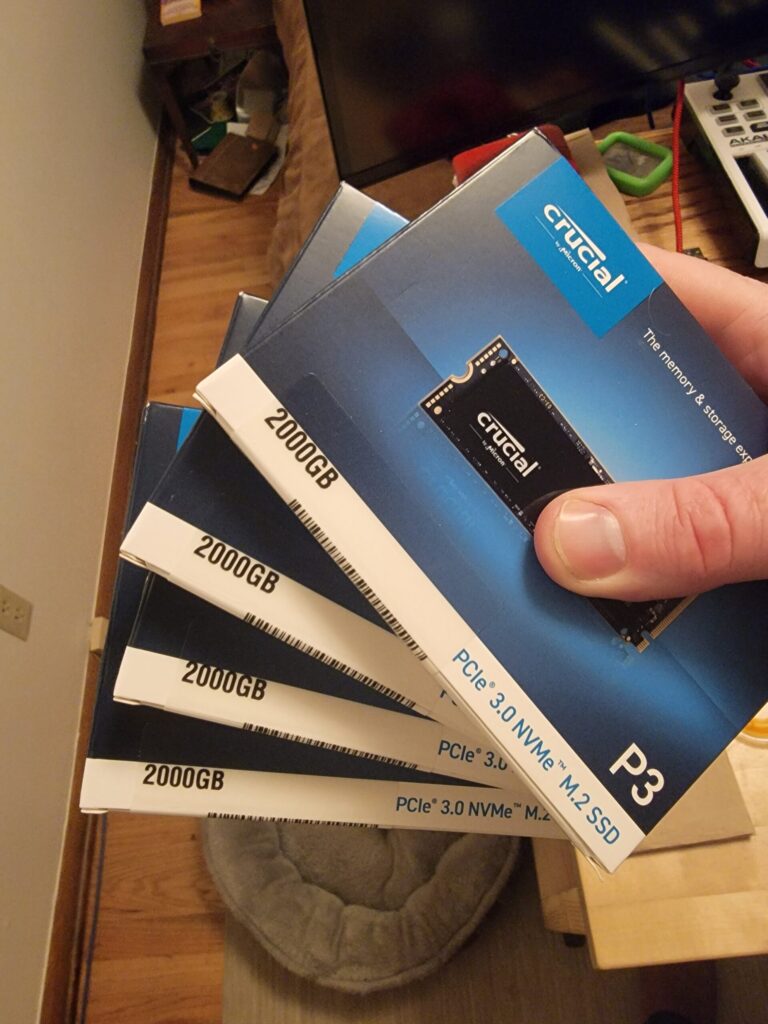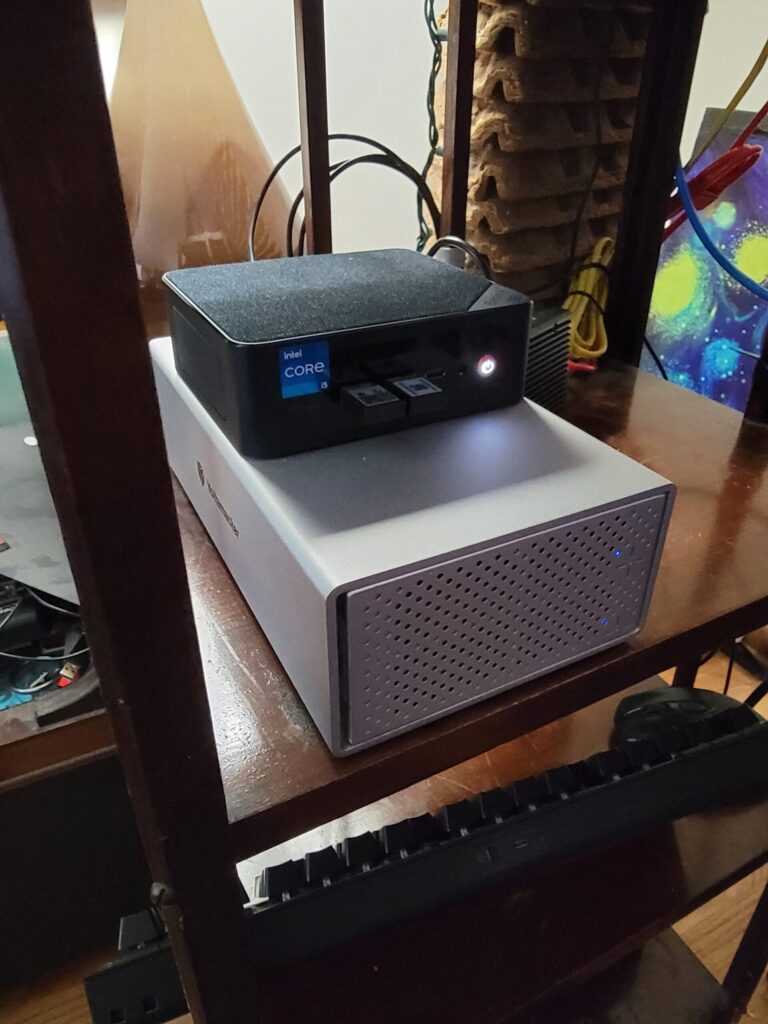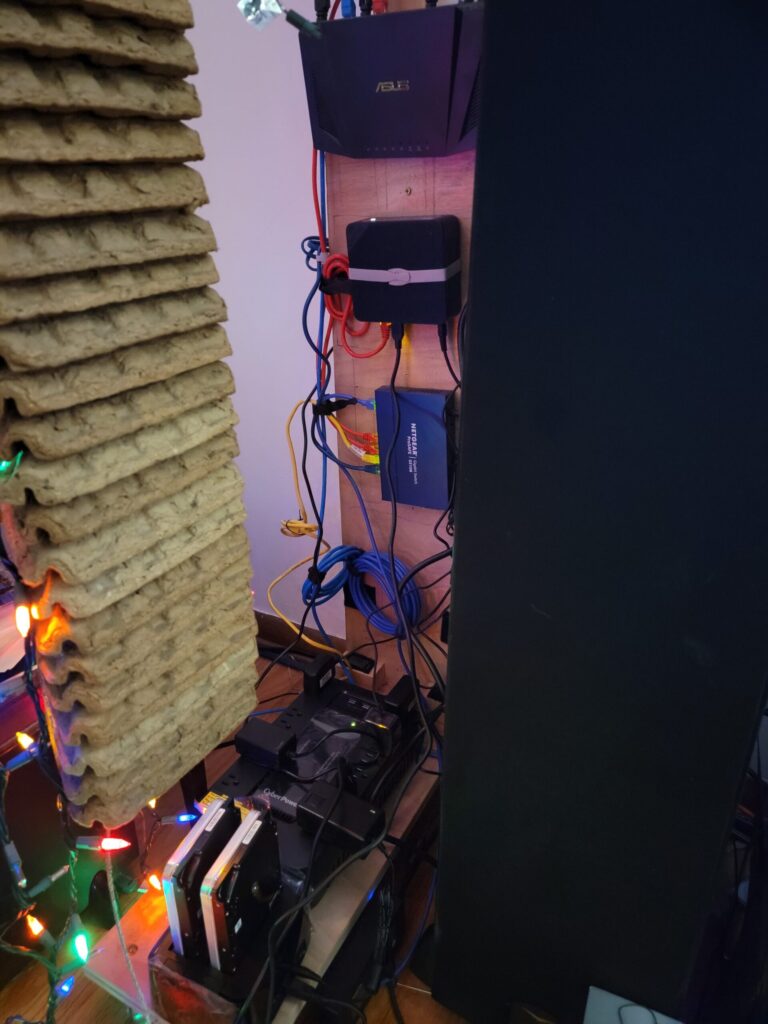Okay so here’s the deal. About a year ago I bought two 2TB SSDs for a video project. I’m not sure exactly why, but they died in short order. It turns out I didn’t really need them for the project anyhow, and after a few months I just figured that I threw away almost $400.

Then one morning, I decided I had nothing to lose by trying to return the drives under warranty. I contacted their warranty department, and after a very brief phone call they told me that they would in fact replace both drives. After another few weeks of emails and waiting for physical mail, I had two brand new SSDs with no purpose.

Oh, wait. I had four brand new SSDs. In one of those never-happens-to-moments, the manufacturer sent two packages of two hard drives. Oddly, this was the second time in a year that something similar happened. One drive was sold, one was gifted, the other two remained.
Since my experimental raspberry pi server only had a 500GB drive, I thought it would be best to start the upgrade there. But after some thought, I realized that the upgrade was going to require rebuilding all of the software for that server. If I was going to put in that kind of work, I might as well consider moving to a new server. My media server is (was) a more than capable 10th generation I5 based micro ATX tower. It made sense in the way that putting all of the server functions into one place would streamline the situation.
I went through all of the footwork of rebuilding my docker containers on the new server, and got everything completely functional. It was actually a great exercise as I found out that past Adam didn’t make many docker compose files, or stacks in portainer. That meant I had to start from scratch for most of my containers, not that bad considering I’m only running about 7 things right now. It also meant that when I realized my media server wasn’t going to do it, I had an easier time reinstalling things on the third server.
My media server was a hodgepodge of sorts. When I built it I was under a strict budget, and I’m not even sure where the power supply came from. But one thing that became abundantly clear was that the whole situation was much too loud for something that I intended to be left on 24/7. It also drew too much power. At idle, the computer was drawing about 38 watts. It doesn’t sound like much, but those two things combined were enough to force me into a new computer.

I ended up with a BeeLink SEI12. It’s a small box, about 5 in square by 2 in high. I don’t know if the form factor has an official name, but I just refer to these as mini PCs. This one also runs an Intel i5, but it’s a 12th generation mobile chip so power usage and heat production are much lower. I don’t know if it’s faster than my old media center tower, but it is about 5% as big and silent. It also has built-in Wi-Fi and Bluetooth, and that Bluetooth might become important if I switch over my home assistant setup from a dedicated raspberry pi to this new computer.
One crucial issue that is created by downsizing is where to put my two 12 terabyte hard drives. My first thought was a NAS, but I decided on a simple drive enclosure. The model pictured above is a Yottamaster, and can do RAID if needed. I don’t. This enclosure doesn’t seem to have any power management, and so I had to learn how to sleep my drives. It made me realize how loud they are, and how much they must have been contributing to the noise of the original server
The mini PC pushed my budget at $399, and I don’t think I need two raspberry pis and a tower sitting around unused. I was already able to sell the GTX 1050 from the media computer, the other items will be sold to pay for the mini PC and whatever sort of storage solution I figure out in the future.
This project has been a success so far. While I did lose some time figuring out my docker compose files, I was able to reinstall my whole software suite in about 2 hours when I moved everything over to the mini PC.
